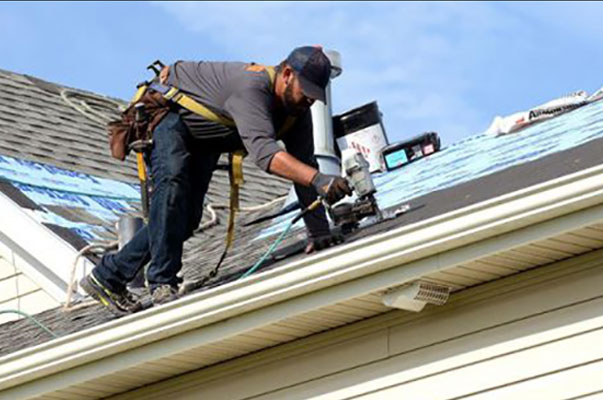How to Identify Common Roof Problems Before They Become Disasters
Your roof is your home’s first line of defense against the Treasure Valley’s dynamic weather. From blistering summer sun to heavy winter snow, your roof endures a lot. Ignoring small issues can quickly lead to extensive, costly damage. Proactively identifying the need for a roof repair in Boise is the key to protecting your property’s value and structural integrity. Many signs of roof failure are visible long before a drip appears in your living room, and knowing what to look for can save you thousands in the long run.
Key Warning Signs Your Roof Needs Attention
1. Leaks and Water Stains
The most obvious sign of a roof problem is evidence of water inside your home. Look for discoloration, brown or yellow stains, or peeling paint on ceilings and walls. Don’t forget to check your attic for damp insulation, water stains on the rafters, or a musty odor, as these are often the first places leaks appear. Even a small, intermittent leak can cause significant secondary issues like mold growth and wood rot.
2. Damaged or Missing Shingles
A visual inspection from the ground can reveal a lot about your roof’s health. Search for shingles that are cracked, curling, buckled, or completely missing. High winds, a common occurrence in Boise, are often the culprit behind missing shingles, leaving your roof’s underlayment exposed to the elements. Curled or buckled shingles can indicate age, improper installation, or poor attic ventilation.
3. Granule Loss
Asphalt shingles are coated with granules that protect them from harsh UV rays and weather. Over time, these granules wear away. You might notice dark, coarse particles accumulating in your gutters or downspouts. Significant granule loss, sometimes appearing as dark or “bald” spots on your roof, is a clear sign that your shingles are nearing the end of their lifespan and losing their protective capabilities.
4. Compromised Flashing
Flashing consists of thin metal strips installed around chimneys, vents, and skylights to direct water away from seams. If this material is cracked, corroded, or loose, it creates an easy entry point for water. Compromised flashing is a frequent source of leaks and requires professional attention to ensure a proper seal.
The Critical Difference: Repair vs. Replacement
Deciding between a repair and a full replacement depends on several factors. While a professional inspection is the best way to get a definitive answer, this table can help you understand what to expect.
| Symptom | Likely Solution: Repair | Likely Solution: Replacement |
|---|---|---|
| Isolated Leak / A Few Missing Shingles | ✔️ If damage is limited to a small area and the rest of the roof is in good shape. | |
| Roof Age (Asphalt Shingles) | ✔️ If the roof is relatively new (under 10-15 years old). | ✔️ If the roof is over 20 years old and showing signs of wear. |
| Widespread Damage / Multiple Leaks | ✔️ When damage affects a large portion of the roof or there are several problem areas. | |
| Significant Sagging | ✔️ Sagging indicates a potential structural issue that requires a comprehensive solution, not a simple patch. |
Ultimately, only a thorough roof inspection can determine the best course of action for your property.
Did You Know?
- The Boise area experiences a semi-arid climate with hot summers, cold winters, and notable temperature swings that can stress roofing materials over time.
- Delaying minor roof repairs can lead to major problems like structural damage, decreased energy efficiency, and hazardous mold growth.
- Many homeowner’s insurance policies may cover roof repairs caused by specific events like wind or hail. Expert assistance with roof insurance claims can be invaluable after a storm.
Your Local Roofing Experts in Boise and the Treasure Valley
Understanding how the local climate impacts residential roofing is crucial. Boise’s heavy winter snowfall can create ice dams, which prevent proper drainage and force water under your shingles. Spring can bring hailstorms and strong winds, while intense summer UV rays degrade materials over time. As a local contractor serving Boise, Meridian, and Eagle, Team Construction understands these unique challenges. We provide solutions that are built to last through every Idaho season.
Whether you have a minor leak or suspect significant storm damage, prompt action is essential. Our team provides comprehensive inspections to assess the condition of your roof and offers clear, honest recommendations. We handle everything from minor repairs to full replacements, ensuring quality workmanship and peace of mind.
Don’t Wait for a Drip! Protect Your Boise Home.
Noticed a missing shingle or a stain on your ceiling? Schedule a free, no-obligation roof inspection with Team Construction. Our experts will identify any potential issues and provide you with a detailed estimate to protect your investment.
Frequently Asked Questions
How often should I have my roof inspected in Boise?
It’s a good practice to have your roof professionally inspected every 1-2 years and always after a major storm involving high winds or hail. Regular inspections can catch minor issues before they escalate.
Can I repair my own roof?
While some minor fixes might seem simple, DIY roof repair can be dangerous and may void your roof’s warranty. Professionals have the right safety equipment, training, and materials to ensure the job is done correctly and safely.
What if I suspect storm damage to my roof?
If you suspect wind and hail damage, call a professional for an immediate inspection. Document any visible damage from the ground and check your gutters for shingle granules. A qualified contractor can help you navigate the entire process, including assisting with insurance claims.
Does my homeowner’s insurance cover roof repairs?
Most standard policies cover roof damage from sudden, accidental events like storms, wind, or hail. However, they typically do not cover damage resulting from lack of maintenance or old age. Team Construction specializes in navigating roof insurance claims and can help you through the process.
